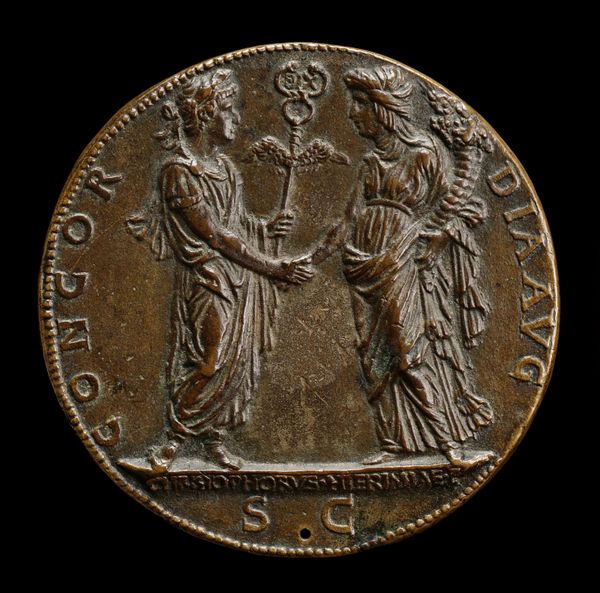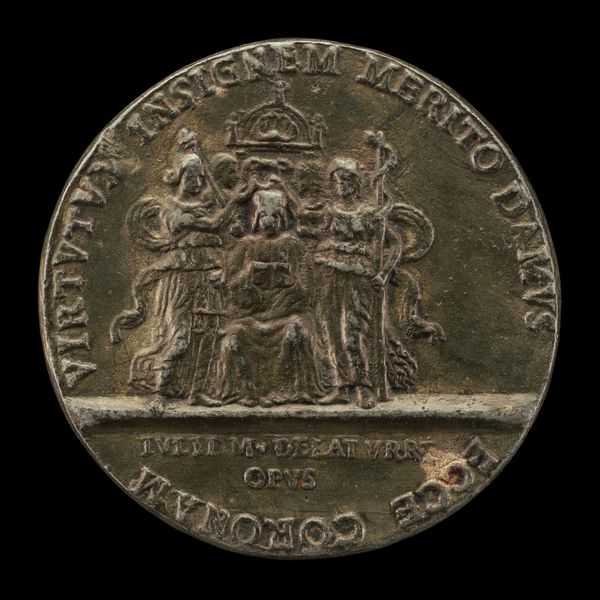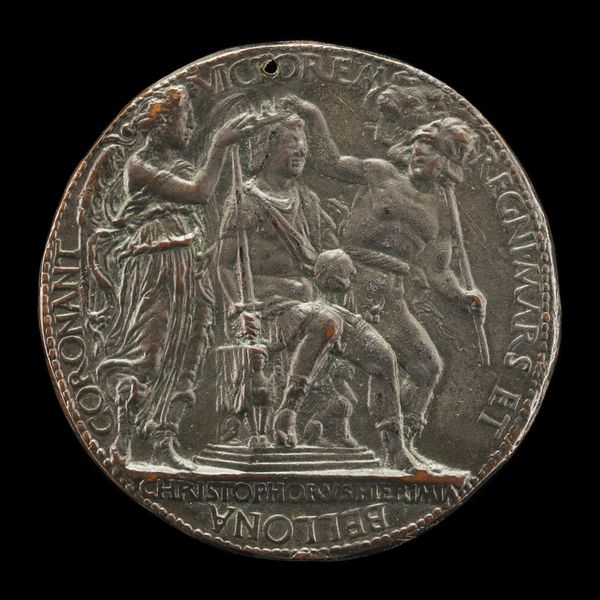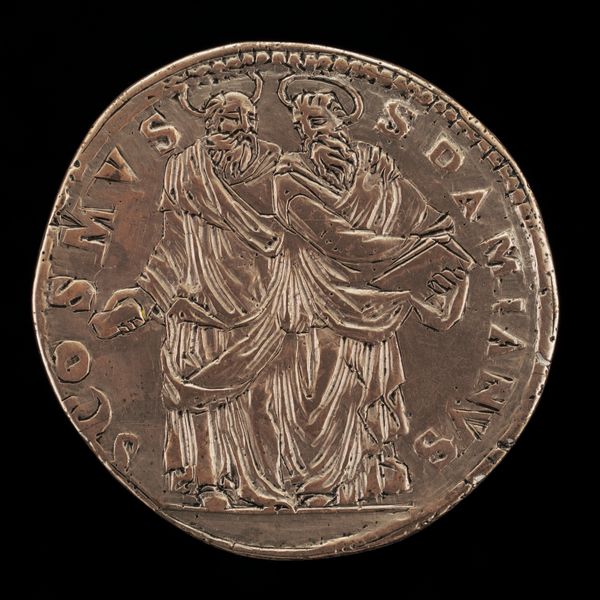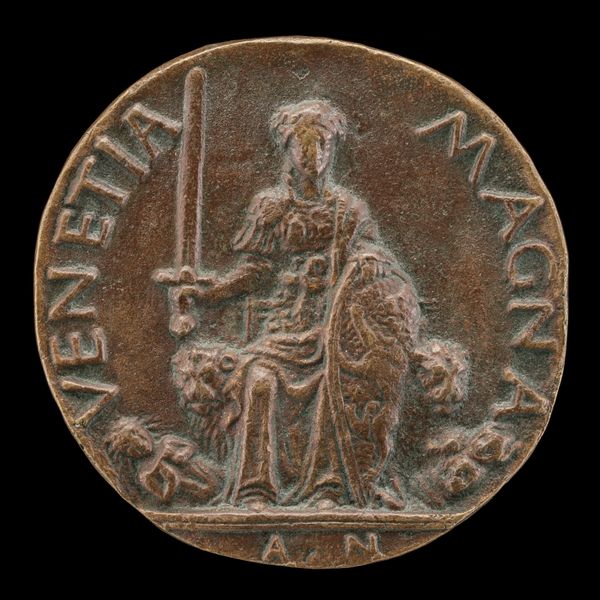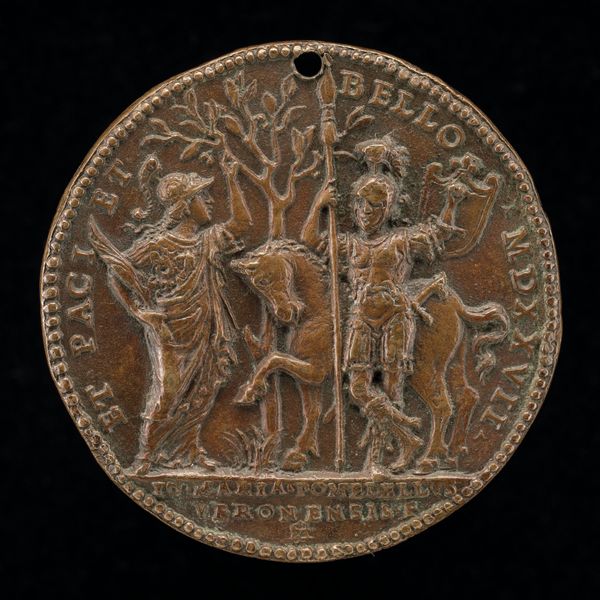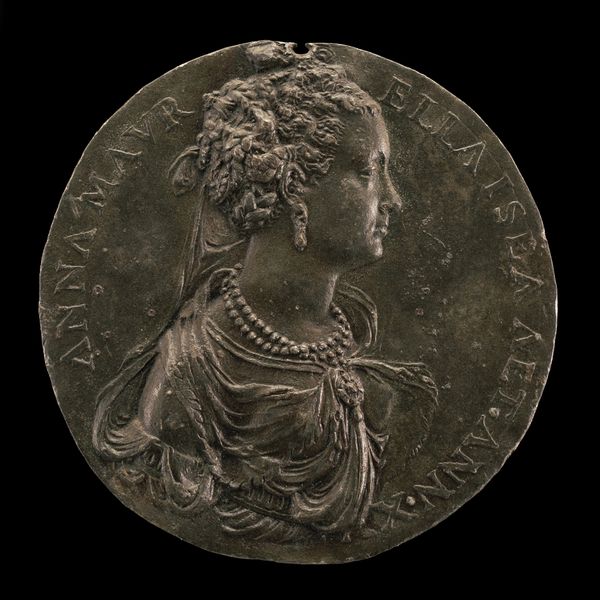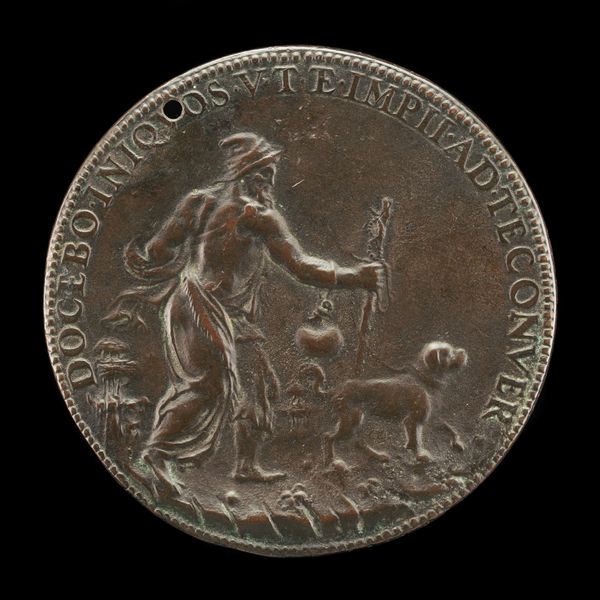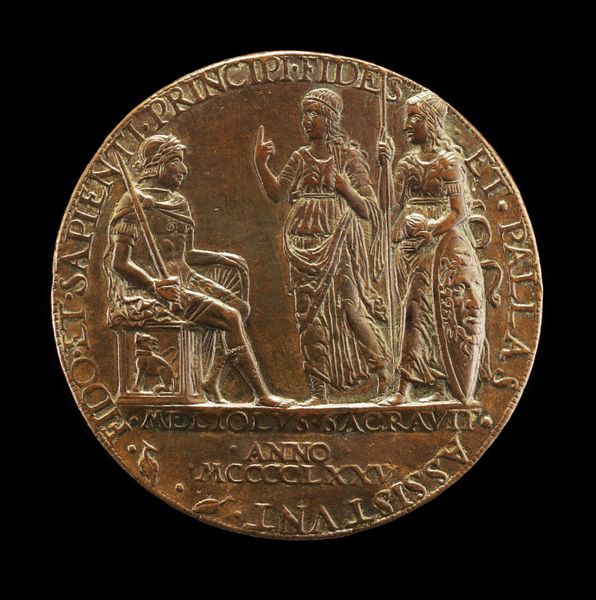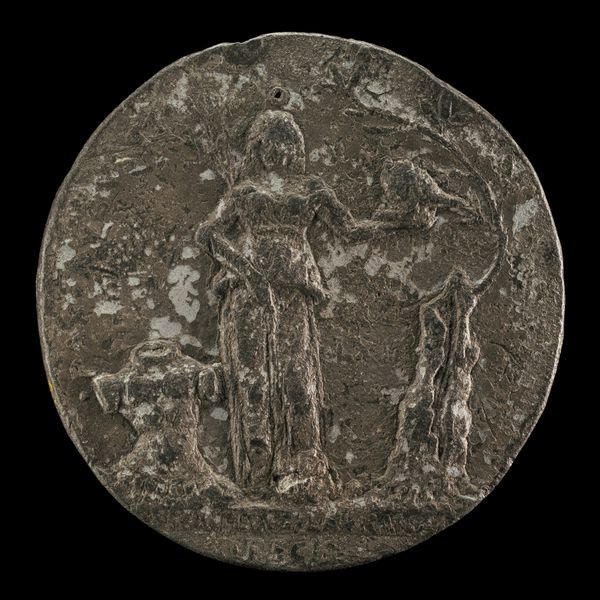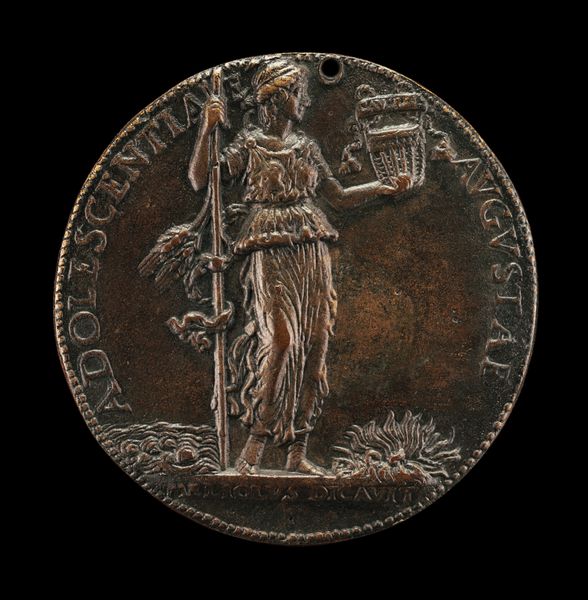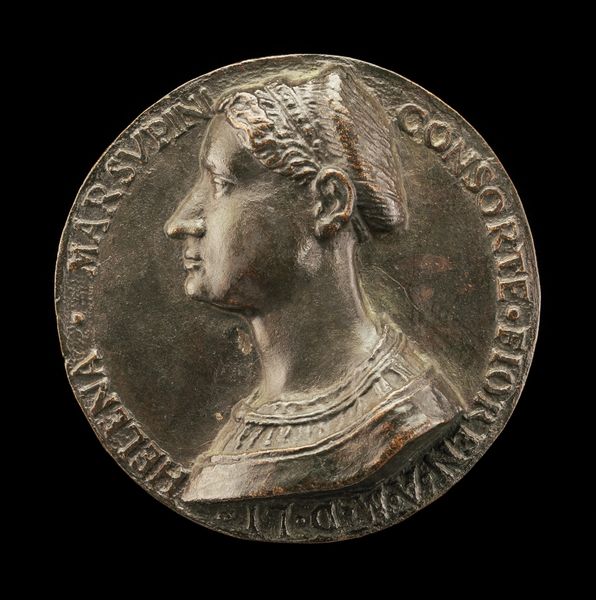![Venetia and Two Furies [reverse] by Antonello della Moneta](/_next/image?url=https%3A%2F%2Fd2w8kbdekdi1gv.cloudfront.net%2FeyJidWNrZXQiOiAiYXJ0ZXJhLWltYWdlcy1idWNrZXQiLCAia2V5IjogImFydHdvcmtzLzg5NmZhMzg3LTVlZmYtNDVmNS1iMmY4LWU0NjUxNTU4OGQ3NS84OTZmYTM4Ny01ZWZmLTQ1ZjUtYjJmOC1lNDY1MTU1ODhkNzVfZnVsbC5qcGciLCAiZWRpdHMiOiB7InJlc2l6ZSI6IHsid2lkdGgiOiAxOTIwLCAiaGVpZ2h0IjogMTkyMCwgImZpdCI6ICJpbnNpZGUifX19&w=3840&q=75)
relief, bronze, sculpture
#
portrait
#
3d sculpting
#
sculpture
#
relief
#
bronze
#
figuration
#
geometric
#
sculpture
#
history-painting
#
italian-renaissance
Dimensions: overall (diameter): 4.03 cm (1 9/16 in.) gross weight: 36.58 gr (0.081 lb.) axis: 1:00
Copyright: National Gallery of Art: CC0 1.0
Curator: Here we have Antonello della Moneta's bronze relief, "Venetia and Two Furies [reverse]," dating back to the 1460s. Editor: The immediate impression is of controlled chaos, the circular format packed with symbolic figures that are practically bursting at the seams. Curator: Della Moneta worked primarily with bronze, a favored material during the Italian Renaissance. What is especially compelling about this relief is the tension between classical idealism and the raw energy he imbued into the material. Notice how the surface texture and casting imperfections lend themselves to a more visceral experience. Editor: Yes, you can feel the history embedded in the making of this bronze roundel. And considering Venice’s position in Renaissance Italy as a trading hub, its embodiment as a powerful, near-allegorical female figure dominating subjugated figures connects powerfully with themes of political might, yet also potentially of oppression and domination of "outsiders" in service of commercial strength. Curator: It’s interesting you mention its political and historical connections; I see the relief almost as a microcosm of the intense artistic rivalries playing out across different workshops at the time. This work shows how highly skilled craftspeople deployed innovative casting methods to emulate the antique prototypes, while adding distinct individual touches. It’s a fascinating nexus of creative forces and specialized expertise. Editor: I wonder too if its production and eventual uses speak about gendered patronage practices and consumption contexts that defined 15th-century elite networks—would it, perhaps, function as an assertion of the Venetian state through explicitly patriarchal and masculinist lenses? Curator: Ultimately, both of our views illuminate aspects that make this bronze so engaging, from its innovative craftsmanship to its intersectional layers. Editor: A fitting encapsulation for how we can both come together and acknowledge distinct voices regarding pieces such as this one.
Comments
No comments
Be the first to comment and join the conversation on the ultimate creative platform.
